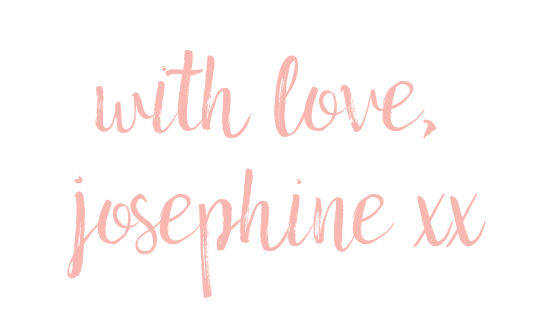Yoga for Athletes (Shin Splints) | Yoga Therapy
Last year, I ran my first ever charity event (City To Surf). For 5 consecutive days after that run, my hip flexors and inside of my right lower leg hurt a lot. In fact, I'm pretty sure I started feeling it 10km into the run. I must have developed my shin splint from that run without realising I was suffering from shin splints until months after. I would continue to go to the gym twice a week, getting on the elliptical for 5km each time I hit the gym. Many months later, I realised that the charity run had more long lasting effects than the feeling of success for completing the 14km run. I accepted that I had developed shin splints and that it had to be dealt with if I wanted to continue to put my legs under any aerobic pressure. I've personally found the yoga flow below quite helpful in relieving the pain and ensuring I can continue to exercise at the gym regularly.
SPECIFIC ISSUE - SHIN SPLINTS (Medial Tibial Stress Syndrome / Tibial Periostitis)
The primary cause of shin splints are from over stressing the muscles in the lower leg, usually affecting the shin muscles down the front (Anterior Tibialis) of the leg or down the inside of the leg (Posterior Tibialis). Although the aforementioned are the common sites of pain, sufferer of shin splints may complain of pain or tenderness in any surrounding area along the ‘shin’ down to the medial side of ankle and/or stretching down the Archilles tendon.
In general, the common term ‘shin splints’ can cover a broad area of the front of the lower leg down to the ankles. Occasionally, there may be redness or swelling of the affected area.
Shin splints occur when the attachment of the muscles originating from the tibia become irritated or inflamed. It is commonly a result of an increase in distance or intensity of exercise using the lower legs and often combined with over-pronation of the foot (rolling in or a ‘flat foot’).
Shin splints are common in athletes or for those with sudden challenge to reach a goal (marathon or training schedule). They can re-occur if left untreated or deteriorate over time, if not given sufficient level of rest.
THE BENEFITS OF YOGA FOR THIS ISSUE (SYMPTOM CONTROL)
The physical aspects of yoga are beneficial for shin splints to:
help stretch out and increase flexibility of tight calf and shin muscles, which may have resulted from shin splints
stretch out tight IT bands and calf muscles pulling on the back of the ankle to assist in flexion of the foot in walking/running, relieving the stress on the shin muscles, to minimise re-occurence of shin splints
assist in correction of ‘flat feet’ or over-pronation of the feet to minimise re-occurence of shin splints
strengthen and the muscles that can help with stability and prevent shin splints, such as the hip flexors, the shin muscles themselves.
Breath work in yoga always helps with carrying oxygen around the body, which aids in all forms of inflammation.
Lastly, Christian yoga is powerful in the healing and prevention of shin splints, as with other dysfunctions; particularly for athletes or those who struggle to drop the ‘addiction’ to their training/workout schedule by allowing them to find identity in Christ and dispel any fear in having to stop their training/schedule to allow for rest.
CONTRAINDICATIONS
If professional medical practitioner has advised against yoga
During the inflammation stage of a shin splint, when the joints are inflamed and affected, do not START a yoga practise. Follow R.I.C.E (Rest, Ice, Compression, Elevation). It’s best to use yoga as a preventative treatment than a symptomatic treatment.
If diagnosed with stress fracture or even tiny muscle tears, seek medical advice on any therapy program, including yoga.
15-30 MINUTE FLOW
Hero pose with Oceanic Breath (10 breath cycles)
Seated Bound angle Pose
Seated Forward Fold, using strap or hands to wrap around the ball of feet to flex the feet
(Left side first) Half Splits, first with foot flexed and toes pointing up and then foot is flat on the ground
Half Pigeon -> transition to Mermaid Pose if it’s available or use a strap to get into the pose to help stretch the quad
---*Repeat 4 & 5 on the right side*---
Downward Facing Dog
3 Legged Downward Dog (Left & Right)
Pyramid Pose (Left & Right)
Mountain Pose (2 rounds of deep breaths) *Notice any tightness around hips, quads, calves, shins
Forward Fold
Downward Facing Dog
Toe Squat (Kneeling with toes tucked under and let body weight sink into the heels, walk knees forward a few steps)
Frog pose (Breathe and allow the opening of the hips and inner hamstrings)
Childs Pose * Seek God and His power of healing
Legs up the wall *Final resting pose (10 breaths)
REFERENCES:
http://www.peacefuldumpling.com/5-yoga-stretches-relieve-tight-calves-shins
http://www.footeducation.com/foot-and-ankle-conditions/shin-splints-tibial-periostitis/
http://www.coachellavalleypodiatrist.com/blog/yoga-poses-and-shin-splints.cfm
http://punchfitnessintheface.com/exercise/shin-splints-prevention-treatment-recovery/
*Disclaimer:
These suggestions offered on www.lovejosephine.com are intended to complement and support the medical treatment targeting the specified issue, with the goal of enhancing the well-being of the patient. It is not intended to replace medical recommendations by your medical practitioners. It is highly recommended and, in most cases, essential that you stay compliant to the treatment advice given by a western medical professional. Prior to starting any physical programs, it is advised to get clearance from a medical professional. Upon medical clearance, the suggestions and educational resources offered on www.lovejosephine.com are meant to be observed and used in conjunction with medical treatment but not replace medical treatment.


